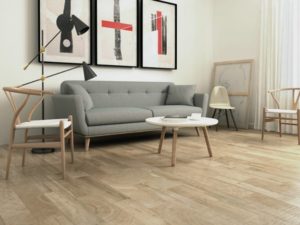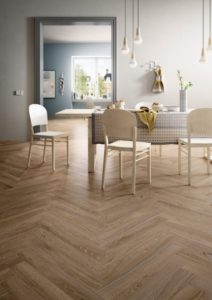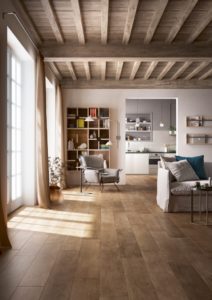 I’ve spoken previously of wood effect porcelain when we were discussing different tile trends and their applications.
I’ve spoken previously of wood effect porcelain when we were discussing different tile trends and their applications.
Here I will go into more detail about wood effect porcelain and weigh up its potential against the real thing, well, engineered wood boards, it’s close to the real thing and its something we have knowledge in.
Engineered Wood flooring is made using a 6mm or 1/4″ layer of real timber glued on top of layers of plywood.
The look you get is the same as solid oak floors, can be treated the same, but is often a cheaper alternative and is more stable due to the way it is made.
Solid wood flooring is a natural product and therefore affected by moisture and heat. Engineered wood is less affected by these atmospheric changes.
However, in the long haul, it still isn’t going to hold up as well as porcelain in areas of the home that come in to frequent contact with moisture. Bathrooms and kitchens may be better suited to the porcelain alternative offered by wood effect tiles.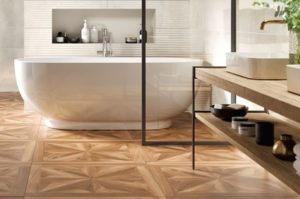
But is it just a matter of taste? There’s nothing like the real thing, right? But you must consider long term durability – and Porcelain is tough!
Manufacturers have really stepped up in their design of it as well. Scandi style home interiors aren’t going anywhere soon and the choice and quality of wood effect tiles now available, reflects this popular scheme.
Tiles are cold you might say. Yes, they are in comparison to wood. Why not consider heated flooring if you are doing a large room? Porcelain is more effective in this instance as it provides better heat transfer as it is more thermally conductive than wood, staying warmer for longer.
Then there’s the question of price.
When talking about porcelain versus engineered, its relatively the same per metre square depending on quality.
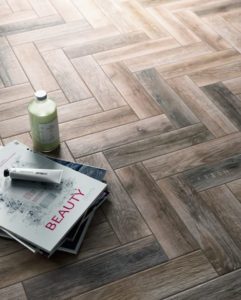 Porcelain comes into its own though when you look at laying patterns. Achieving parquet floor styles is defiantly cheaper when laying porcelain.
Porcelain comes into its own though when you look at laying patterns. Achieving parquet floor styles is defiantly cheaper when laying porcelain.
Some companies have this covered by producing large square tiles that look like individually laid intricate wood blocks.
One thing that can’t be achieved with the porcelain is the glossy lustre of a waxed and polished wood floor.
With most wood effect tiles coming in a more matt finish, the overall appearance lacks the warmth and refinement achieved by real wood.
Real wood floors are a luxury for most and when properly treated and maintained certainly add value to a space.
There are some glossed tiles out there though and I think companies will continue to perfect how they make the tiles, with more emphasis on realism and appearance.
So, what do you prefer? As I said, it does come down to personal style and taste, but I think for sustainability and price it’s got to be the wood effect porcelain for me.
Porcelain’s durability means it is going to look the same as when you first laid it years down the road. There’s so much choice on the market as well, different woods and grain, painted styles, rustic drift wood, you’re sure to find something to suit most tastes.
Oh, and in case you were wondering…all the pictures I’ve used today are not real wood. That’s right, they’re porcelain!